Totality in Svalbardpublished at 10:18 GMT 20 March 2015
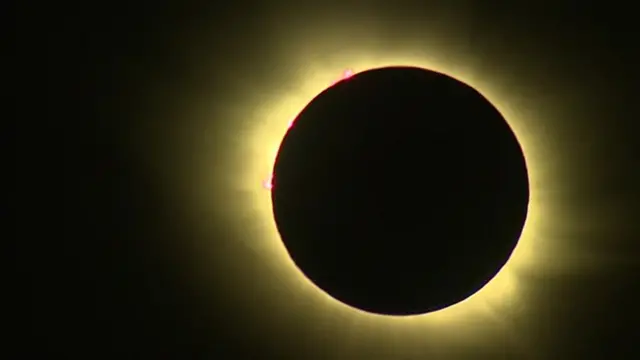
The Norwegian archipelago of Svalbard has now experienced totality as shown in this image.
All parts of the UK have been witnessing a partial solar eclipse, which started at about 08:18 GMT in southern England and peaked at around 09:36
The Faroe Islands and Svalbard in the Arctic Circle were the only places to experience a total eclipse
The amount of the sun's disc which is obscured varied from 96% in northern Scotland to 83% in southern England
Chris Lansdown, Lauren Turner, Kerry Alexandra, Jennifer Green and Michael Orwell

The Norwegian archipelago of Svalbard has now experienced totality as shown in this image.
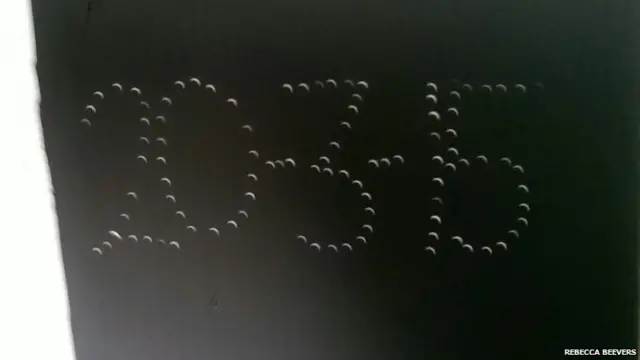 Image source, Rebecca Beevers
Image source, Rebecca BeeversRebecca Beevers from Rugby sent us this stunning image.
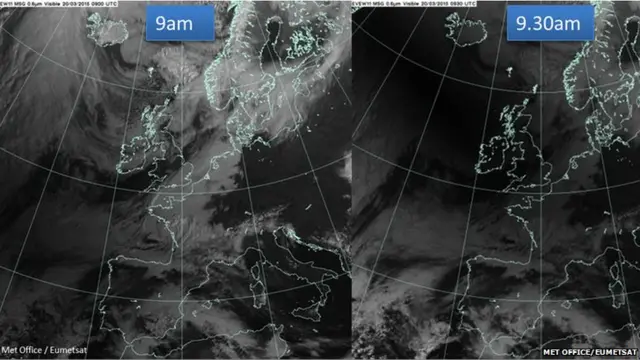 Image source, Met office/Eumetsat
Image source, Met office/Eumetsat@BBCWeather tweets, external: "You can see the shadow cast by #Eclipse2015 on these images from space. Much darker over UK at 9.30am."
See the total eclipse live now by clicking the "Live coverage" tab above.
Svalbard, Norway, is now experiencing totality. The eclipse will soon be zipping towards the North Pole where the Moon's shadow will lift off of the Earth after a journey of 3,635 miles (5,850 km) over 4 hours and 9 minutes.
It's been called the first great astronomical event of the century.
The last solar eclipse of such significance occurred on 11 August 1999. It was a total eclipse with 100% of the sun covered when seen from Cornwall.
The next so-called "deep" partial eclipse will be visible in the UK on 12 August 2026, with the next total eclipse not happening until September 2090.
The last major eclipse was back in 1999 which is why everyone has been so keen to catch a glimpse of today's event. Do let us know what you saw by emailing haveyoursay@bbc.co.uk.
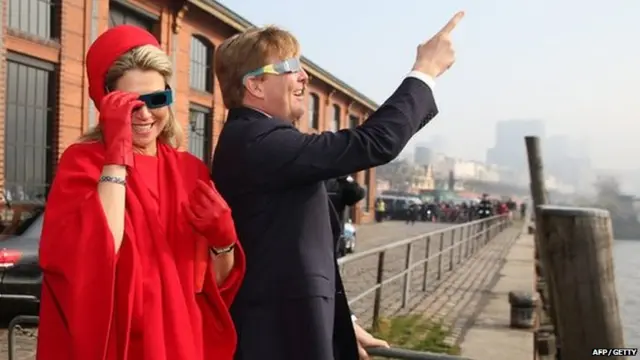 Image source, AFP/Getty
Image source, AFP/GettyYou're looking the wrong way! Here are King Willem-Alexander and Queen Maxima of the Netherlands using protective glasses to watch the solar eclipse.
Sunspots - eruptions on the Sun's surface - and solar flares are some of the features that could be seen in Cornwall as the eclipse took hold, the BBC News channel is told.
Not everyone has been able to see the eclipse @JoaoPereira43, external tweeted "#eclipse too cloudy to see the eclipse in Southend :("
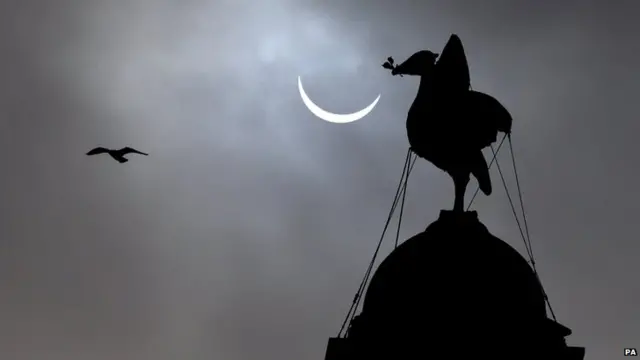 Image source, PA
Image source, PAStunning pictures of the eclipse are coming out. Here's the Sun behind one of the Liver Birds on Liverpool's Royal Liver building.
So, how was it for you? Email haveyoursay@bbc.co.uk to tell us your experience of seeing the eclipse. Please don't look at the sun directly if you're taking any images though!
@BBCWeather tweets, external: "We couldn't see the #Eclipse2015 in London but the team went outside anyway!"
 Image source, EPA
Image source, EPAThis boy in Turin, Italy, is trying to catch a glimpse of the eclipse - let's hope those are protective glasses he's got on!
Sun's atmosphere: The solar corona is a million times less bright than the surface of the Sun. So this is the only time it can be seen without using special equipment to artificially block out the other sunlight. In fact, without eclipses, it's likely that the corona would have remained undiscovered until recent decades.
Helium: The second most abundant element known to humans was discovered during the total solar eclipse of August 16, 1868. It is named after the Greek word for the Sun - Helios.
Proving Einstein's theory: British astronomer Sir Arthur Eddington tested Albert Einstein's theory of general relativity during a total solar eclipse in 1919. By taking pictures of stars near the Sun he was able to show that gravity can bend light.
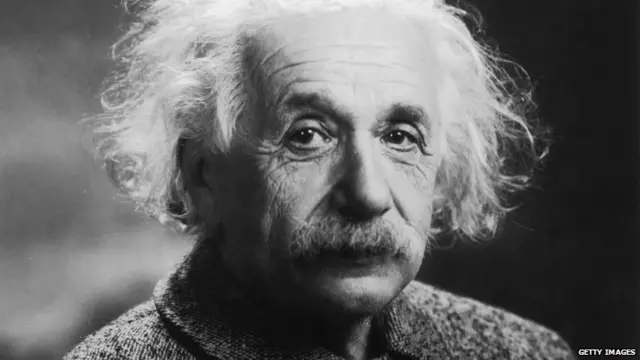 Image source, Getty Images
Image source, Getty ImagesChrissie Day she us her picture of people gathering to watch the eclipse in Truro in Cornwall this morning.
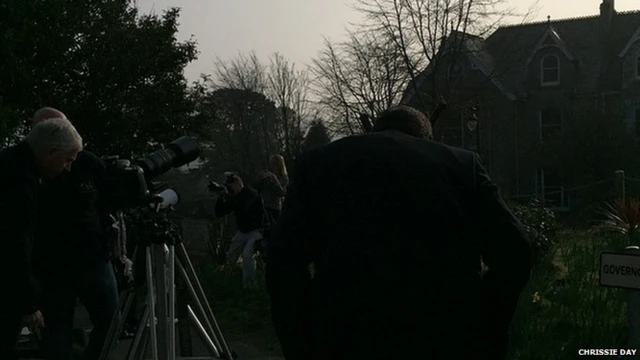 Image source, Chrissie Day
Image source, Chrissie DayThe BBC's Chris Hollins, watching the total eclipse on the Faroe Islands, said of the moment of the eclipse: "It's as if someone's pulled the light and life out of the place."

Some amazing detail can be seen in this picture of the total eclipse from the Faroe Islands.
The only two land masses to experience a total eclipse today are the Faroe Isles 200 miles (321km) north of Scotland, and Svalbard, a Norwegian archipelago in the Arctic Ocean.
@KnowledgeInnit, external has tweeted @BBC_HaveYoursSay: #eclipse - just very gloomy here in Ealing. Too cloudy to see anything related to the moon getting in the way of the sun.